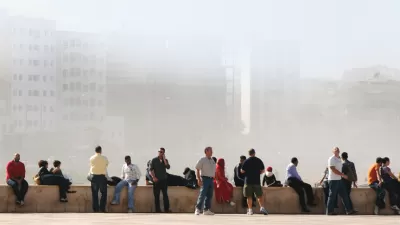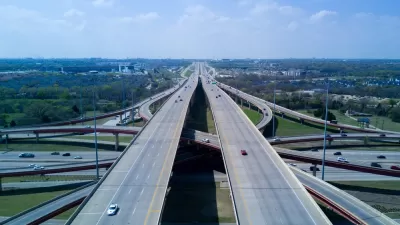Danish Architect Jan Gehl talks about the intersections of architecture and social science.

Architect, consultant, author of the groundbreaking book, Cities for People, and subject of the documentary THE HUMAN SCALE, Jan Gehl of Gehl Architects answers questions for Mikki Brammer of Metropolis.
Gehl talks about his early influences, as an observer of Danish society. "Every time we build something, we manipulate the conditions of people’s lives, but most planners don’t know enough about this manipulation."
He discusses the strategy his firm employed as a consultant to the Copenhagen city council. Copenhagen is now recognized as the most walkable city on Earth. "It’s no secret that we have always built cities for people until cars started to invade our lives...Part of that strategy was focusing on having good public spaces that invite people to be outside as much as possible, because it’s important for the safety of the city and social inclusion and democracy."
He focuses on the universalities of design rather than cultural context. "We are homo sapiens and we are made as a walking animal and have the same biological history...Whether we live in Greenland or in a very hot climate somewhere, we adapt and discover, but we all have the same aspirations."
Gehl is passionate about the need for architects to understand the way people live and interact in the built environment. "Because if you just do form, then you are doing sculpture, but if you look after the interaction between life and form, you are doing architecture."
FULL STORY: Q&A: Jan Gehl on Making Cities Healthier and the Real Meaning of Architecture

Alabama: Trump Terminates Settlements for Black Communities Harmed By Raw Sewage
Trump deemed the landmark civil rights agreement “illegal DEI and environmental justice policy.”

Planetizen Federal Action Tracker
A weekly monitor of how Trump’s orders and actions are impacting planners and planning in America.

The 120 Year Old Tiny Home Villages That Sheltered San Francisco’s Earthquake Refugees
More than a century ago, San Francisco mobilized to house thousands of residents displaced by the 1906 earthquake. Could their strategy offer a model for the present?

In Both Crashes and Crime, Public Transportation is Far Safer than Driving
Contrary to popular assumptions, public transportation has far lower crash and crime rates than automobile travel. For safer communities, improve and encourage transit travel.

Report: Zoning Reforms Should Complement Nashville’s Ambitious Transit Plan
Without reform, restrictive zoning codes will limit the impact of the city’s planned transit expansion and could exclude some of the residents who depend on transit the most.

Judge Orders Release of Frozen IRA, IIJA Funding
The decision is a victory for environmental groups who charged that freezing funds for critical infrastructure and disaster response programs caused “real and irreparable harm” to communities.
Urban Design for Planners 1: Software Tools
This six-course series explores essential urban design concepts using open source software and equips planners with the tools they need to participate fully in the urban design process.
Planning for Universal Design
Learn the tools for implementing Universal Design in planning regulations.
Clanton & Associates, Inc.
Jessamine County Fiscal Court
Institute for Housing and Urban Development Studies (IHS)
City of Grandview
Harvard GSD Executive Education
Toledo-Lucas County Plan Commissions
Salt Lake City
NYU Wagner Graduate School of Public Service




























